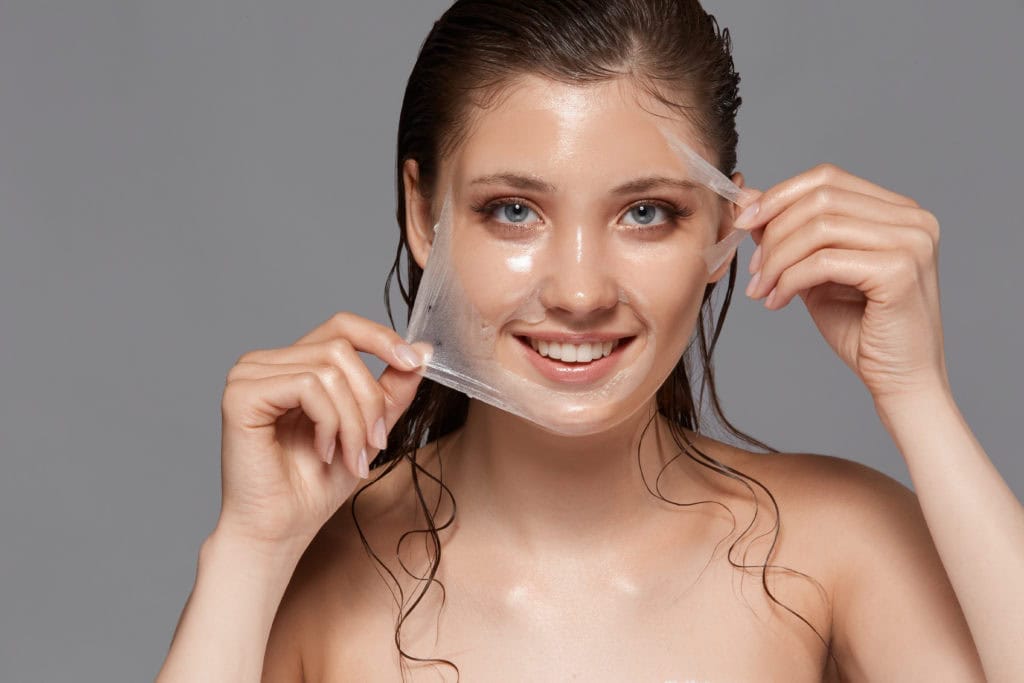Chemical peels help in treating major skin problems. One of these issues is the scarring brought about by having acne. Even though you no longer have this condition, the scarring it leaves can be devastating. Nowadays, especially with modern technology and breakthroughs being discovered, all skin conditions can already become things of the past. Today, we’ll talk about acne scars and if, through chemical peeling, can these acne scars be treated.
What are Chemical Peels?
Chemical peels are treatments involving the application of an acid or a mixture of acids to one’s face towards removing the skin’s top layers. Consequently, this peeling reveals the new skin beneath as growth stimulation of collagen improves the skin’s appearance at the same time. These chemical peels are typically used in addressing a wide variety of skin concerns and issues like some forms of scarring caused by acne.
Can Chemical Peels Fade Acne Scars?
Yes, chemical peels fade acne scars. This procedure can be done through hyperpigmentation reduction and skin surface smoothening. The effectiveness of these chemical peels depends on their type and the severity of the targeted scarring.
Types of Acne Scars
Acne scars treated with chemical peels can be divided into two (2) groups: atrophic or hypertrophic.
Atrophic scars are forms of indents seen on the surface of the skin. These scars result from new tissues not created successfully when the acne lesions are healed. Additionally, atrophic scars can still be grouped into three (3) broad categories, depending on the scar’s appearance. These sub-categories are as follows:
- Boxcar – are wider-shaped scars, usually round or oval, and caused by loss of collagen after breakouts.
- Icepick – are small-shaped deep and narrow scars in general and occur after experiencing deep infections.
- Rolling – are shallow scars, making a wavy skin texture appearance, caused by fibrous tissues getting pulled unevenly on the epidermis.
Reduction of atrophic scarring may require multiple chemical peels over months to years. Depending on its severity, the possibility of scarring not being eliminated is inevitable, but you can still make improvements.
On the other hand, hypertrophic scars are caused by excessive collagen production during the acne’s healing course, raised above one’s skin. More extreme forms of hypertrophic scarring are popularly known as keloids, which are scars that continue to grow even after some time. Hypertrophic scars are known to be untreatable by chemical peels since these peels aren’t strong enough treatments that can do so.
Type of Chemical Peels Best for Acne Scars
Chemical peels are also divided into three (3) broad categories: light, medium, and deep.
- Light chemical peels may already be sufficient in reversing the effects of hyperpigmentation and smoothen mild scarring, especially after multiple treatments.
- A medium peel can generate much quicker results than a light peel, requiring only one treatment.
- Deep peels are not generally suggested for treating acne scars.
Chemical Peels Best for Acne Scars
As common as most peel chemicals, they still work differently in reducing acne scars. Chemical peels your clinician or provider chooses for you will significantly depend on your scarring type and severity.
Other known factors can be skin tone and sensitivity. Not all peels are proven safe for darker skin tones, while generally, sensitive skin requires lower acid concentrations to avoid irritation.
Glycolic Acid
Perhaps the most prevalent chemical peel among the list, glycolic acids, can treat acne scars. This acid can smoothen the skin’s surface, reducing appearances of atrophic scarring while suppressing the formation of melanin as it lightens the skin and reduces the likelihood of hyperpigmentation. Glycolic acids are safe chemical peels for all skin types. However, people with darker skin tones should not frequently use this type because it can result in discoloration of the skin with excessive use.
Lactic Acid
Lactic acid smoothens skin and helps fade hyperpigmentation. This chemical peel is a weak form of alpha-hydroxy acid (AHA) that easily dissolves the skin’s uppermost layer, revealing fresh skin underneath. It is considered safe for all skin types, including dry or sensitive skin types.
Mandelic Acid
Along with skin texture improvement, mandelic acid is a chemical peel that can treat post-inflammatory hyperpigmentation that results from acne scarring. This particular acid is formulated for darker skin since its mechanism of action is slower, making it less likely to end up with skin discoloration. Although it might be possible to work more slowly than other acids, it can still deliver significant results.
Salicylic Acid
This chemical peel is more than an acne treatment – it can also help in post-inflammatory scarring reduction. Salicylic acid is a form of beta-hydroxy acid (BHA) that helps exfoliate the skin, promoting collagen production and skin texture improvement. It is best for people who suffer from oily skin since it temporarily reduces sebum production, the oil produced by our skins. For this same reason, people with dry skin should avoid this chemical peel. While salicylic acid treats mild scarring, it’s not practical for deeper atrophic scars.
Trichloroacetic Acid
Chemical peels using trichloroacetic acid treat atrophic scarring together with hyperpigmentation. This chemical peel is considered a medium peel that requires up to two (2) weeks of downtime when administered by a professional. Trichloroacetic acids can be administered in treating icepick and boxcar scars using what is known as the CROSS technique. This procedure involves individual depressions spot-treated in the skin, reconstructing scarred tissues.
Chemical Peels: Can They Prevent Acne Scarring?
Proper management of your acne is critical in preventing deep acne scarring. Chemical peels can be effectively used and be included in your skincare routine as it helps reduce breakouts and potential risks of subsequent scarring. Among the aforementioned types, salicylic and glycolic acids are two chemical peels commonly utilized in removing dead skin cells. These two (2) peels can also prevent bacteria that lead to acne formation as they also temporarily reduce sebum production. Although chemical peels can’t address acne causes on a hormonal level, they may still help mitigate the damage acne done on the skin. But it is also possible that amidst all precautions taken, you still inevitably experience acne scarring.
Chemical Peels: Takeaways
Chemical peels cannot treat all known forms of acne scars, but they can still noticeably improve the texture and appearance of skin for the majority. With the right chemical peel, considering the type of scarring you have and your skin type, you can say goodbye to acne scarring once and for all. Chemical peels may be the best solution for your acne scarring and other skin-related concerns.
Do you want to know more about chemical peels and experience them yourself? Our great friends at ZI Bloom Aesthetics got you covered. Visit them now and experience the wonders of chemical peeling! https://zibloom.com/


